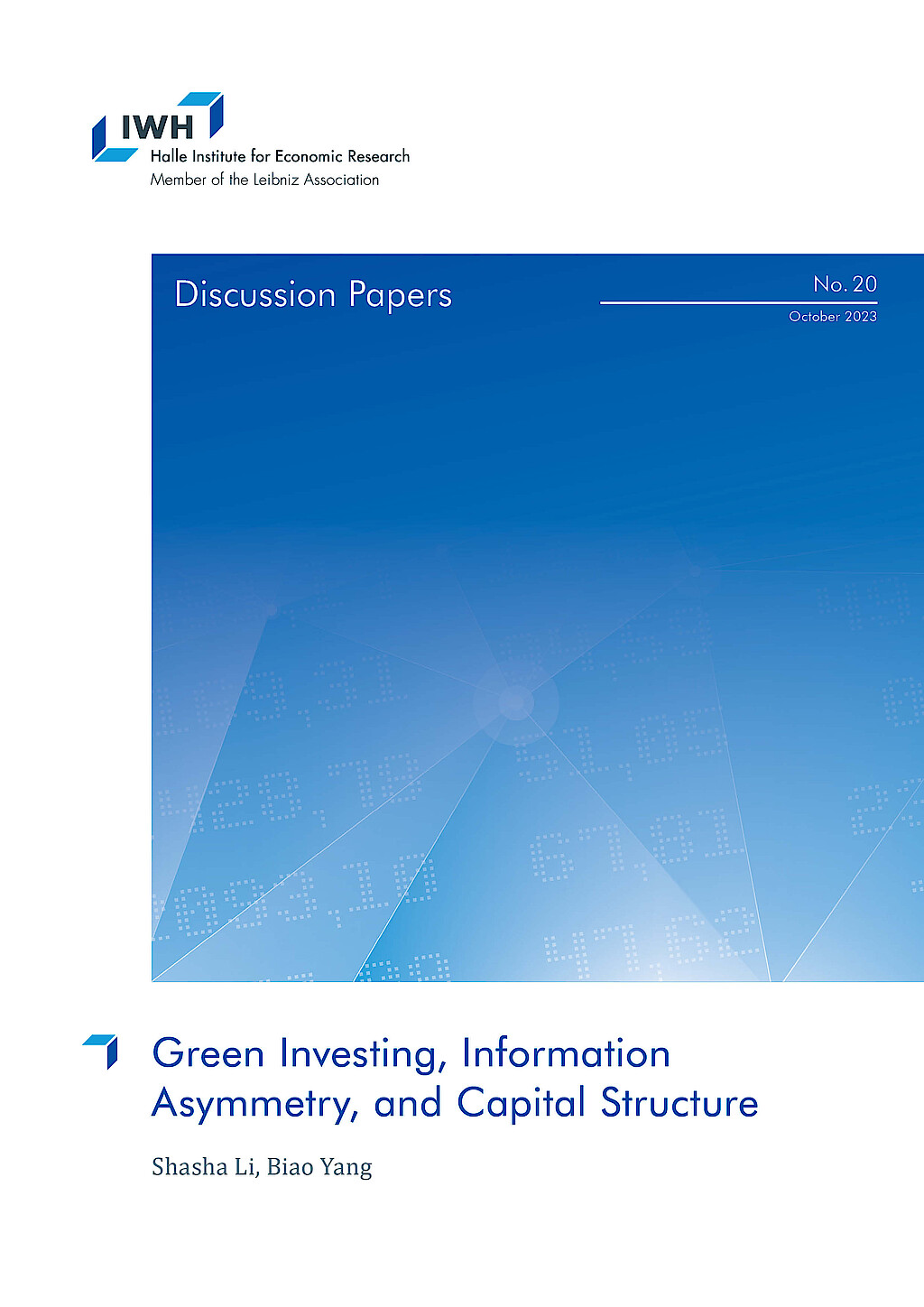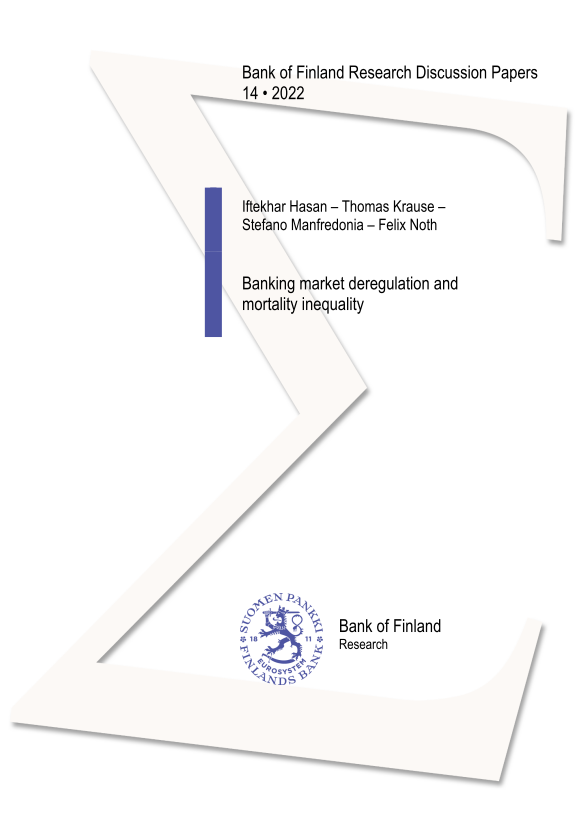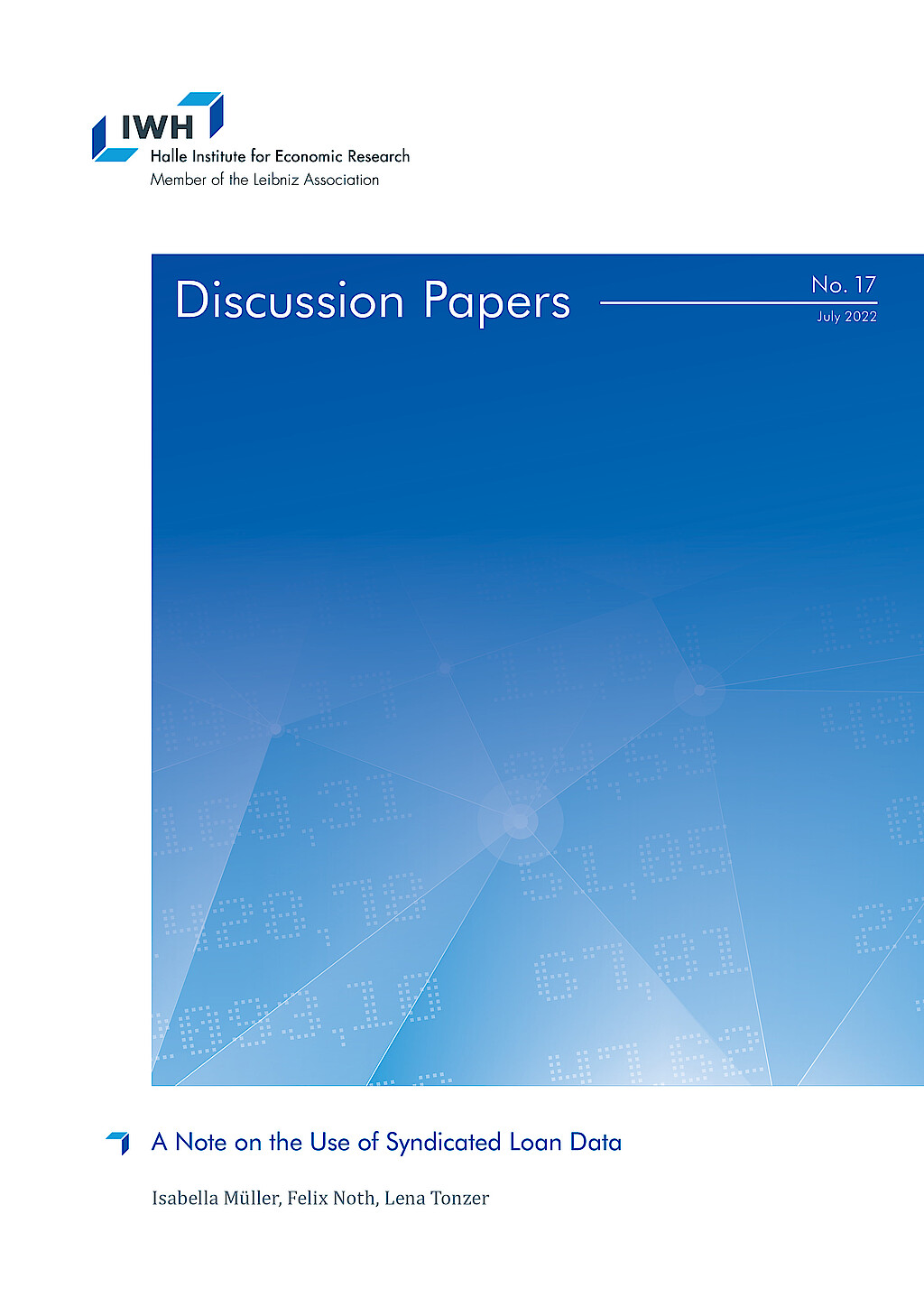Financial System Adaptability and Resilience
This research group investigates critical aspects of financial system adaptability and resilience. First, it analyses the impact of natural disasters on financial systems. Second, the group aims to investigate the effects of political preferences for the green transition. Third, the group's research analyses the role of culture in economies.
Research Cluster
Financial Resilience and RegulationYour contact

- Department Financial Markets
EXTERNAL FUNDING
08.2022 ‐ 07.2025
OVERHANG: Debt overhang and green investments - the role of banks in climate-friendly management of emission-intensive fixed assets
The collaborative project “Debt Overhang and Green Investments” (OVERHANG) aims to investigate the role of banks in the climate-friendly management of emission-intensive fixed assets. This will identify policy-relevant insights on financial regulation, government-controlled lending and financial stability, as well as raise awareness among indebted stakeholders.
01.2015 ‐ 12.2019
Interactions between Bank-specific Risk and Macroeconomic Performance
07.2016 ‐ 12.2018
Relationship Lenders and Unorthodox Monetary Policy: Investment, Employment, and Resource Reallocation Effects
We combine a number of unique and proprietary data sources to measure the impact of relationship lenders and unconventional monetary policy during and after the European sovereign debt crisis on the real economy. Establishing systematic links between different research data centers (Forschungsdatenzentren, FDZ) and central banks with detailed micro-level information on both financial and real activity is the stand-alone proposition of our proposal. The main objective is to permit the identification of causal effects, or their absence, regarding which policies were conducive to mitigate financial shocks and stimulate real economic activities, such as employment, investment, or the closure of plants.
Refereed Publications

Investment and Internal Finance: Asymmetric Information or Managerial Discretion?
in: International Journal of Industrial Organization, No. 1, 2006
Abstract
This paper examines the investment-cash flow sensitivity of publicly listed firms in The Netherlands. Investment-cash flow sensitivities can be attributed to overinvestment resulting from the abuse of managerial discretion, but also to underinvestment due to information problems. The Dutch corporate governance structure presents a number of distinctive features, in particular the limited influence of shareholders, the presence of large blockholders, and the importance of bank ties. We expect that in The Netherlands, the managerial discretion problem is more important than the asymmetric information problem. We use Tobin's Q to discriminate between firms with these problems, where LOW Q firms face the managerial discretion problem and HIGH Q firms the asymmetric information problem. As hypothesized, we find substantially larger investment-cash flow sensitivity for LOW Q firms. Moreover, specifically in the LOW Q sample, we find that firms with higher (bank) debt have lower investment-cash flow sensitivity. This finding shows that leverage, and particularly bank debt, is a key disciplinary mechanism which reduces the managerial discretion problem.

Aggressive Orders and the Resiliency of a Limit Order Market
in: Review of Finance, No. 2, 2005
Abstract
We analyze the resiliency of a pure limit order market by investigating the limit order book (bid and ask prices, spreads, depth and duration), order flow and transaction prices in a window of best limit updates and transactions around aggressive orders (orders that move prices). We find strong persistence in the submission of aggressive orders. Aggressive orders take place when spreads and depths are relatively low, and they induce bid and ask prices to be persistently different after the shock. Depth and spread remain also higher than just before the order, but do return to their initial level within 20 best limit updates after the shock. Relative to the sample average, depths stay around their mean before and after aggressive orders, whereas spreads return to their mean after about twenty best limit updates. The initial price impact of the aggressive order is partly reversed in the subsequent transactions. However, the aggressive order produces a long-term effect as prices show a tendency to return slowly to the price of the aggressive order.

Distance, Lending Relationships, and Competition
in: Journal of Finance, No. 1, 2005
Abstract
We study the effect on loan conditions of geographical distance between firms, the lending bank, and all other banks in the vicinity. For our study, we employ detailed contract information from more than 15,000 bank loans to small firms comprising the entire loan portfolio of a large Belgian bank. We report the first comprehensive evidence on the occurrence of spatial price discrimination in bank lending. Loan rates decrease with the distance between the firm and the lending bank and increase with the distance between the firm and competing banks. Transportation costs cause the spatial price discrimination we observe.

The Impact of Technology and Regulation on the Geographical Scope of Banking
in: Oxford Review of Economic Policy, No. 4, 2004
Abstract
We review how technological advances and changes in regulation may shape the (future) geographical scope of banking. We first review how both physical distance and the presence of borders currently affect bank lending conditions (loan pricing and credit availability) and market presence (branching and servicing). Next we discuss how technology and regulation have altered this impact and analyse the current state of the European banking sector. We discuss both theoretical contributions and empirical work and highlight open questions along the way. We draw three main lessons from the current theoretical and empirical literature: (i) bank lending to small businesses in Europe may be characterized both by (local) spatial pricing and resilient (regional and/or national) market segmentation; (ii) because of informational asymmetries in the retail market, bank mergers and acquisitions seem the optimal route of entering another market, long before cross-border servicing or direct entry are economically feasible; and (iii) current technological and regulatory developments may, to a large extent, remain impotent in further dismantling the various residual but mutually reinforcing frictions in the retail banking markets in Europe. We conclude the paper by offering pertinent policy recommendations based on these three lessons.

Softening Competition by Inducing Switching in Credit Markets
in: Journal of Industrial Economics, No. 1, 2004
Abstract
We show that competing banks relax overall competition by inducing borrowers to switch lenders. We illustrate our findings in a two-period model with adverse selection where banks strategically commit to disclosing borrower information. By doing this, they invite rivals to poach their first-period market. Disclosure of borrower information increases the rival's second-period profits. This dampens competition for serving the first-period market.
Working Papers

Green Investing, Information Asymmetry, and Capital Structure
in: IWH Discussion Papers, No. 20, 2023
Abstract
We investigate how optimal attention allocation of green-motivated investors changes information asymmetry in financial markets and thus affects firms‘ financing costs. To guide our empirical analysis, we propose a model where investors with heterogeneous green preferences endogenously allocate limited attention to learn market-level or firm-specific fundamental shocks. We find that a higher fraction of green investors in the market leads to higher aggregate attention to green firms. This reduces the information asymmetry of green firms, leading to higher price informativeness and lower leverage. Moreover, the information asymmetry of brown firms and the market increases with the share of green investors. Therefore, greater green attention is associated with less market efficiency. We provide empirical evidence to support our model predictions using U.S. data. Our paper shows how the growing demand for sustainable investing shifts investors‘ attention and benefits eco-friendly firms.

Long-run Competitive Spillovers of the Credit Crunch
in: IWH Discussion Papers, No. 10, 2023
Abstract
Competition in the U.S. appears to have declined. One contributing factor may have been heterogeneity in the availability of credit during the financial crisis. I examine the impact of product market peer credit constraints on long-run competitive outcomes and behavior among non-financial firms. I use measures of lender exposure to the financial crisis to create a plausibly exogenous instrument for product market credit availability. I find that credit constraints of product market peers positively predict growth in sales, market share, profitability, and markups. This is consistent with the notion that firms gained at the expense of their credit constrained peers. The relationship is robust to accounting for other sources of inter-firm spillovers, namely credit access of technology network and supply chain peers. Further, I find evidence of strategic investment, i.e. the idea that firms increase investment in response to peer credit constraints to commit to deter entry mobility. This behavior may explain why temporary heterogeneity in the availability of credit appears to have resulted in a persistent redistribution of output across firms.

Banking Market Deregulation and Mortality Inequality
in: Bank of Finland Research Discussion Papers, No. 14, 2022
Abstract
This paper shows that local banking market conditions affect mortality rates in the United States. Exploiting the staggered relaxation of branching restrictions in the 1990s across states, we find that banking deregulation decreases local mortality rates. This effect is driven by a decrease in the mortality rate of black residents, implying a decrease in the black-white mortality gap. We further analyze the role of mortgage markets as a transmitter between banking deregulation and mortality and show that households' easier access to finance explains mortality dynamics. We do not find any evidence that our results can be explained by improved labor outcomes.

A Note on the Use of Syndicated Loan Data
in: IWH Discussion Papers, No. 17, 2022
Abstract
<p>Syndicated loan data provided by DealScan is an essential input in banking research. This data is rich enough to answer urging questions on bank lending, e.g., in the presence of financial shocks or climate change. However, many data options raise the question of how to choose the estimation sample. We employ a standard regression framework analyzing bank lending during the financial crisis of 2007/08 to study how conventional but varying usages of DealScan affect the estimates. The key finding is that the direction of coefficients remains relatively robust. However, statistical significance depends on the data and sampling choice and we provide guidelines for applied research.</p>

Capital Requirements, Market Structure, and Heterogeneous Banks
in: IWH Discussion Papers, No. 15, 2022
Abstract
Bank regulators interfere with the efficient allocation of resources for the sake of financial stability. Based on this trade-off, I compare how different capital requirements affect default probabilities and the allocation of market shares across heterogeneous banks. In the model, banks‘ productivity determines their optimal strategy in oligopolistic markets. Higher productivity gives banks higher profit margins that lower their default risk. Hence, capital requirements indirectly aiming at high-productivity banks are less effective. They also bear a distortionary cost: Because incumbents increase interest rates, new entrants with low productivity are attracted and thus average productivity in the banking market decreases.



















